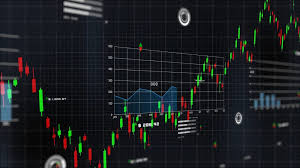www.beststartup.in
Crypto Trading Technical Tools Empowering Your Trading Strategy

Crypto Trading Technical Tools: Empowering Your Trading Strategy
In the dynamic world of cryptocurrency trading, having the right technical tools at your disposal can make all the difference in your trading performance. From advanced charting software to cutting-edge indicators, crypto trading technical tools can offer insights that help traders make informed decisions. For those looking to delve into the world of crypto trading, understanding these tools is crucial for developing a successful strategy. This article will explore various technical tools available for traders, how to use them effectively, and their significance in the trading process. Additionally, we will highlight the importance of keeping updated with industry trends, exemplified by innovative sectors such as Crypto Trading Technical Tools https://www.beststartup.in/67-india-based-public-transportation-companies-the-most-innovative-public-transportation-companies/ in India.
The Importance of Technical Analysis in Crypto Trading
Technical analysis is the backbone of crypto trading. It involves analyzing market data, primarily price and volume, to predict future price movements. Unlike fundamental analysis, which examines the wider economy and external factors affecting asset value, technical analysis focuses solely on price movements and trading volumes, making it indispensable in the highly volatile environment of cryptocurrency trading.
Key Benefits of Technical Analysis:
- Identifies trends: Helps traders recognize upward and downward market trends.
- Helps with timing: Provides insights into the best times to enter or exit trades.
- Risk management: Tools like stop-loss orders can be effectively utilized using technical analysis.
Essential Technical Tools for Crypto Trading
Numerous technical tools are available to assist crypto traders in their endeavors. Here we will detail some of the most essential tools that can improve your trading strategy:
1. Charting Software
Charting software is perhaps the most crucial tool for crypto traders. These platforms provide graphical representations of price movements over time, making it easier to visualize and interpret market trends. Popular options include TradingView, Coinigy, and CryptoCompare, each offering a range of features tailored to trader needs.
2. Technical Indicators
Technical indicators are mathematical calculations based on historical price and volume data. They help traders analyze market trends and potential trading opportunities. Some commonly used technical indicators include:
- Moving Averages: Smooth out price data by creating a constantly updated average price. Useful for identifying trends.
- Relative Strength Index (RSI): Measures the speed and change of price movements. An RSI above 70 indicates overbought conditions, while below 30 indicates oversold conditions.
- Bollinger Bands: Consist of a middle band (moving average) and two outer bands that indicate volatility and price levels.
3. Candlestick Patterns

Candlestick charts provide more information than line charts, allowing traders to see the open, high, low, and close prices within a specified time period. Various candlestick patterns can signal potential reversals or continuation in trends, making them an indispensable tool in technical analysis.
4. Order Book Analysis Tools
Order book analysis tools display current buy and sell orders in the market. Understanding order flow and the liquidity of different assets can guide traders in making better decisions. Tools like CoinMarketCap’s order book or Delta Exchange give traders critical insights into market sentiments.
Developing a Technical Trading Strategy
Using technical tools requires a solid strategy. Here’s how to develop an effective technical trading strategy:
1. Define Your Goals
The first step is to determine your trading objectives. Are you looking to make short-term profits, or are you more focused on long-term holdings? Your goals will dictate the technical tools and strategies you implement.
2. Choose Your Tools Wisely
Based on your trading goals, select the tools that best fit your strategy. Whether it’s charting software for trend analysis or indicators for entry and exit points, ensure you are comfortable with the tools you choose.
3. Backtesting Your Strategy
Before executing trades with real money, backtest your strategy against historical price data. This helps identify whether your strategy would have been successful in the past, providing valuable insights for future trades.
4. Continuous Learning and Adaptation
The cryptocurrency market is ever-evolving. Staying updated with market trends and continuously educating yourself about new tools and indicators is vital. Consider joining forums, attending webinars, or subscribing to specialized publications to expand your knowledge.
Conclusion
In the fast-paced world of cryptocurrency trading, technical tools are invaluable for making informed decisions. By mastering various tools such as charting software, technical indicators, and candlestick patterns, traders can enhance their strategies and improve their chances of success. Remember, the key to successful trading is not only selecting the right tools but also continuously learning and adapting to market changes. With the right approach and mindset, anyone can benefit from the advantages that technical analysis offers in their crypto trading journey.
